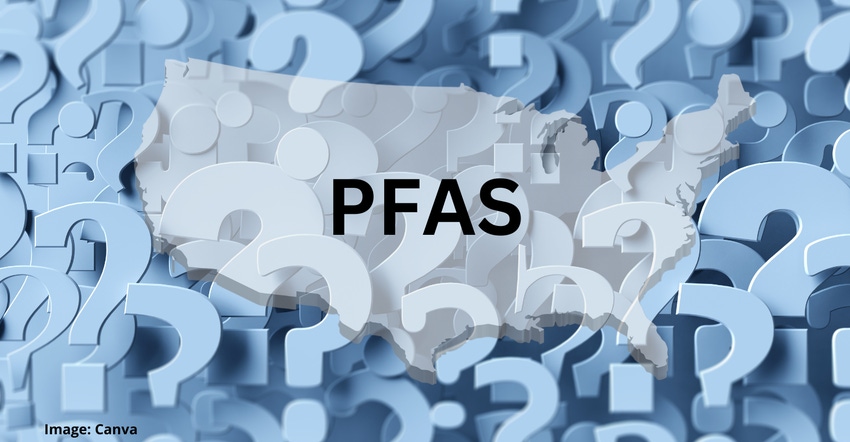Unpacking PFAS Food Packaging Regulations in the US
A look at current and forthcoming state regulations that ban per- and polyfluoroalkyl substances, better known as PFAS or “forever chemicals.”
September 19, 2023

Jeffrey Hunter, Andrea Driggs, Aubri Margason, Sara Cloon
Per- and polyfluoroalkyl substances (PFAS), known as “forever chemicals,” have been in use since the 1940s. They have been added to a wide variety of products to make them resistant to heat, water, oil, and corrosion. PFAS chemicals are not only in firefighting foam but can also be found in numerous consumer products, including food packaging. PFAS restrictions in food packaging tend to focus on packaging made of plant-based fibers; these include paper or paperboard because these materials are often treated with PFAS chemicals to make them oil, grease, or water resistant.
Food packaging made of other materials, such as glass, metal, or plastic, are often not in scope though this can differ by state. Restrictions on PFAS in food packaging are not limited to products used in foodservice establishments — consumer food packaging products, e.g., paper plates, cups, and bowls sold at retail are also typically covered.
Congress has not passed comprehensive legislation banning PFAS chemicals, though it did enact a law banning PFAS in food packaging provided to the military in late 2020. In the absence of federal regulation, at least 12 states have moved to regulate PFAS in food packaging, and many other states are considering doing so. Most of the states that have adopted legislation regulate only “intentionally added” PFAS, but California has also established a maximum threshold for PFAS in food packaging. Implementation timelines differ among states, as outlined in more detail below.
A state-by-state look at PFAS legislation.
States that have or will legislate the use of PFAS in food packaging appear below in order of oldest to newest.
New York. New York currently bans the distribution and sale of food packaging containing intentionally added PFAS.
California. California prohibits any person from distributing, selling, or offering to sell any food packaging that contains PFAS (either intentionally added or at or above 100 parts per million (ppm)).
Washington. Washington’s food packaging prohibition has a tiered ban on the manufacture, sale, and distribution of any “food packaging to which PFAS chemicals have been intentionally added in any amount” once the Washington State Department of Ecology identifies safer alternatives. The first bans took effect in February 2023 and apply to wraps, plates, food boats, or pizza boxes; these will be followed by bans, in May of 2024, on bags and sleeves (made from flexible material), bowls, flat serviceware (such as trays and plates), open-top containers, and closed containers.
Vermont. As of July 1, 2023, Vermont’s law bans the manufacture, sale, and distribution of any food package to which PFAS have been intentionally added.
Connecticut. As of December 31, 2023, Connecticut’s law bans food packaging to which PFAS have been intentionally introduced during manufacturing or distribution.
Colorado. Colorado’s ban on intentionally added PFAS in food packaging takes effect January 1, 2024.
Maryland. As of January 1, 2024, Maryland’s law prohibits the manufacture or distribution of any food packaging with intentionally added PFAS.
Minnesota. As of January 1, 2024, Minnesota’s statute bans the manufacture, sale, or distribution of food packaging containing intentionally added PFAS.
Rhode Island. As of January 1, 2024, Rhode Island bans food packaging to which PFAS have been intentionally introduced during manufacturing or distribution.
Hawaii. As of December 31, 2024, Hawaii’s law makes it unlawful to manufacture, sell, or distribute “any food packaging specified in subsection (b) [wraps and liners, plates, food boats, and pizza boxes] to which PFAS chemicals have been intentionally introduced in any amount.”
Oregon. As of January 1, 2025, Oregon’s law prohibits the sale or distribution of foodware containers with intentionally added PFAS, in addition to the use by food vendors of polystyrene foam containers for prepared food.
Maine. As of January 1, 2030, any products sold, offered for sale, or distributed in Maine cannot contain intentionally added PFAS. Maine’s Department of Environmental Protection has further released draft rules for regulating PFAS chemicals in food packaging; these draft regulations would apply to manufacturers with over $1 billion in sales.
How to deal with PFAS going forward.
Manufacturers should consider product testing and require that product component manufacturers test their components and provide Certificates of Compliance (CoCs). To potentially avoid liability or minimize risk, distributors and retailers should require that manufacturers provide adequate CoCs. Businesses should collaborate with legal counsel and other experts to enable informed choices regarding the manufacturing, distribution, and sale of food packaging containing PFAS chemicals.
Authors: Jeffrey Hunter is Partner, Andrea Driggs is Counsel, Aubri Margason is Counsel, and Sara Cloon is Associate for the international law firm of Perkins Coie. The company maintains more than 1,200 lawyers in offices across the US and Asia, providing a full array of corporate, commercial litigation, intellectual property, and regulatory legal advice to a broad range of clients.
You May Also Like


